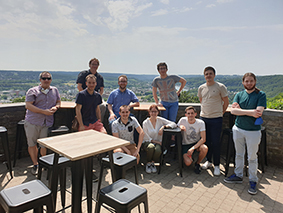Henrard research group
We investigate the optical and structural properties of nanomaterials and 2D materials, based on numerical simulations that combine electrodynamics and electronic structure approaches. Our objective is to explain and predict the properties of materials to address both fundamental and applied challenges.
- Plasmonic response of metallic and semi-conducting nanoparticles based on discrete dipole approximation (DDA). This research includes surface enhanced response of molecules (SERS, SEIRA), dual-band electrochromism, electron energy loss spectrocopy (EELS) , …
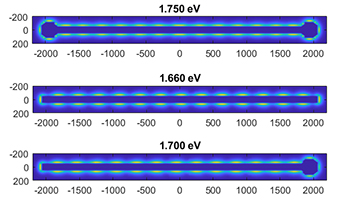
- M. Peleaz-Fernandez et al. Toward Laser-Induced Tuning of PlasmonicResponse in High Aspect Ratio Gold Nanostructures”. Nanophotonics 2022
- Spectroscopy responses of 2D materials and their derivative based on Density Functional Theory (DFT) and semi-empirical approach (Tight-Binding). This research includes the simulations of optical and magnetic responses, STM fingerprints, …
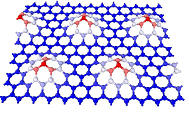
- G. Dobrik et al. “Large-area nanoengineering of graphene corrugations for visible-frequency graphene plasmons”. Nature Nanotechnology 17 (2022) 61
- A. Honet et al. “Semi-empirical many-body formalism of optical absorption in nanosystems and molecules”. Carbon Trends 4 (2021) 100073
- F. Joucken et al. “Electronic properties of chemically doped graphene” Phys. Rev. Materials 3 (2019) 110301
- Optical response of anisotropic heterostructures of 2D materials. This research includes the investigation of the role of the anisotropy and the developpement of effective medium theory.
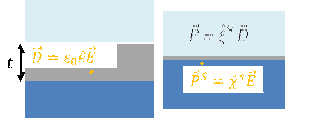
- B. Majerus et al. “Electrodynamics of two-dimensional materials: Role of anisotropy”. Phys. Rev. B 12 (2018) 125419
- Growth of 2D materials and carbon-based materials. This research includes the first steps of the growth of 2D graphene and BN layers and diamond surfaces
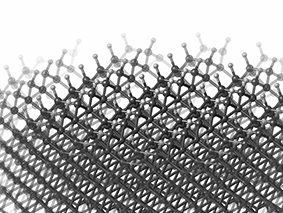
- N. Reckinger et al. “Restoring self-limited growth of single-layer graphene on copper foil via backside coating”. Nanoscale 11 (2019) 5094
- P. Gaillard et al. “Growth of nitrogen-doped graphene on copper: Multiscale simulations”. Surface Science 644 (2016) 102
Our group develop the DDEELS software for the simulation the optical and EELS responses of nanosystems, based on Discrete Dipoles Approximation (DDA)
Group Members (July 2022)
